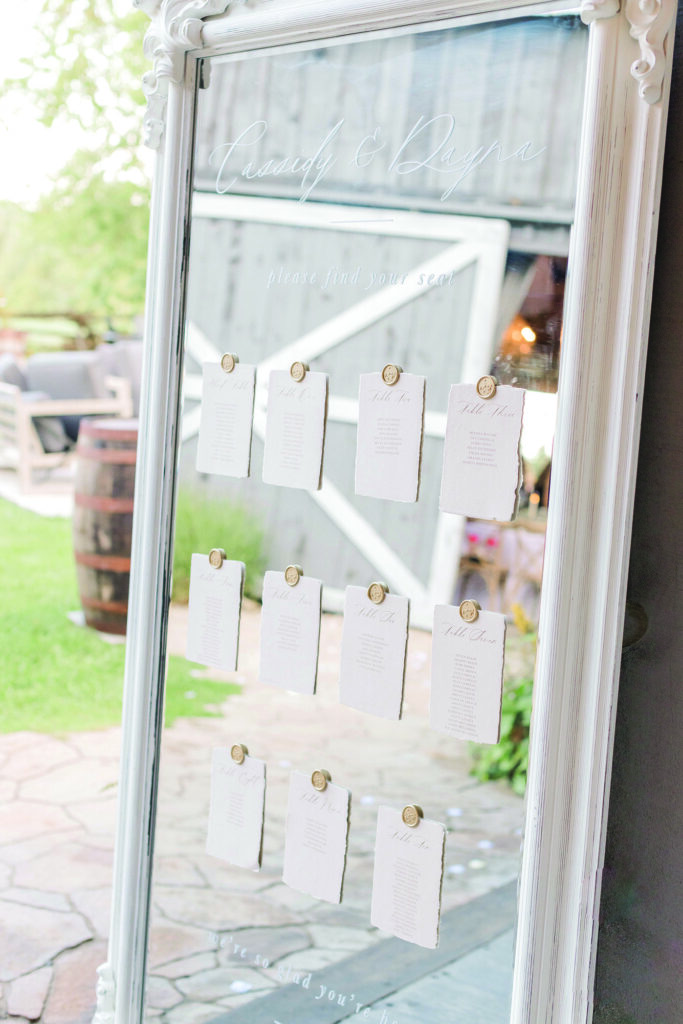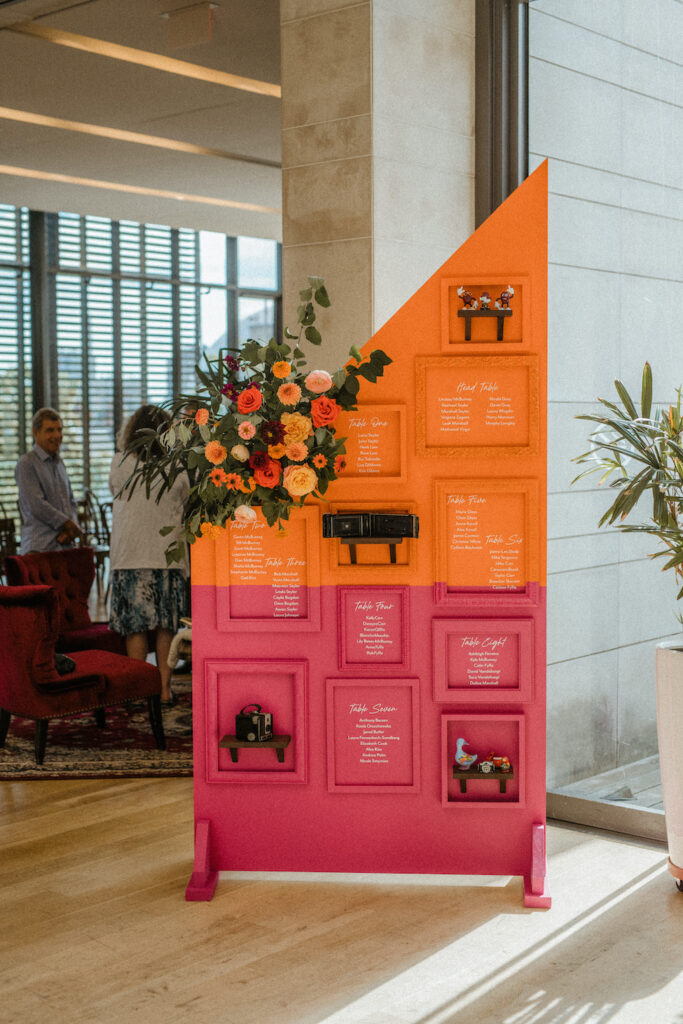Should Aunt Mary sit next to Cousin John? Would Uncle Marty want to sit closer to the head table or the bar? And where do I put Mom’s best friend who’s flying in from abroad? If any of this sounds familiar to you, you may be knee-deep in creating a wedding seating chart for your upcoming wedding. And as you probably know, organizing who sits where and with who can be a complicated process, one that requires the utmost care and attention to detail.
A well-thought-out seating plan can guarantee your guests a fantastic time, while a poorly organized one might lead to confusion and discomfort. In this article, we’ll share some essential tips and guidelines to help you become a pro at organizing your wedding seating chart.

Why a thoughtful seating chart is key
Crafting a solid seating chart is crucial for a successful wedding reception. It not only brings order to the event but also ensures your guests feel comfortable. By strategically placing guests, you can spark conversations and interactions, making sure everyone has a blast.
A seating chart also allows you to handle special requests, like keeping certain guests apart or providing easy access to facilities for elderly attendees. Moreover, a well-planned wedding seating chart can boost the overall look of your reception, creating a visually pleasing and cohesive atmosphere.
Get to know your venue layout
Before diving into your seating chart, familiarize yourself with your wedding venue’s layout. Visit the space, explore the dining area, dance floor, and any other spots that will be in use. This helps you visualize how tables should be arranged and make the most of the available space. Consider table shapes and sizes, the bar and buffet locations, and any potential obstacles or areas needing special attention.
Factors to keep in mind when crafting your seating chart
Several important factors come into play when creating your wedding seating chart. Consider the dynamics and relationships between guests, addressing family feuds or old disputes. Think about guests who might feel uneasy sitting next to strangers. Also, factor in the age and preferences of your guests, accommodating the needs of older and younger attendees. Aim for a balanced and diverse mix of personalities and interests at each table to encourage lively conversations.
Tips for grouping guests into tables
Grouping guests into tables can be challenging, but with the right approach it can be a breeze. Begin by categorizing guests into groups such as family, friends, colleagues, and acquaintances. This helps identify who should sit together and who should be kept apart. Create a wedding seating chart that allows for a mix of different social circles, allowing guests to meet new people and make connections.

Crafting a stylish wedding seating chart display
Once your seating chart is finalized, it’s time to create a visually appealing display. This is a practical guide for guests and a beautiful addition to your wedding decor. Explore creative ways to present your seating chart, considering your wedding theme and personal style.
Use a large framed mirror or vintage window frame as a backdrop, and write names and table numbers in elegant calligraphy or stylish fonts. Add decorative elements like flowers or greenery to make it unique, and then place the wedding seating chart prominently at the entrance for easy visibility.
Handling special guests’ seating arrangements
Special guests such as parents, close family, or VIPs may need special seating arrangements. Consider their preferences and any specific needs they might have. Communicate with them in advance to understand their preferences and make them feel valued. And assign a dedicated host or hostess to attend to their needs throughout the reception.
Dealing with last-minute changes and RSVPs
Wedding planning is dynamic and last-minute changes and RSVPs are common, so make sure to have a system in place to handle these changes efficiently. Keep a digital copy of your wedding seating chart that’s easily editable and printable. Communicate with guests about the importance of timely RSVPs and request prompt notification of any changes. Be prepared to adjust your seating chart as needed, and don’t stress about minor changes. Focus on creating a comfortable and enjoyable experience for your guests.
Thinking outside the box with seating options
While traditional round tables are common, consider alternative seating options to add a unique touch to your celebration. Explore arrangements that align with your wedding theme and style. Long banquet-style tables can create a warm, intimate atmosphere for a rustic or bohemian vibe. Lounge seating areas with sofas and chairs offer a relaxed ambiance. For smaller weddings, a family-style seating arrangement at a long, rectangular table can foster connection. Don’t be afraid to experiment with different seating options for a memorable and personalized experience.









Leave a Reply